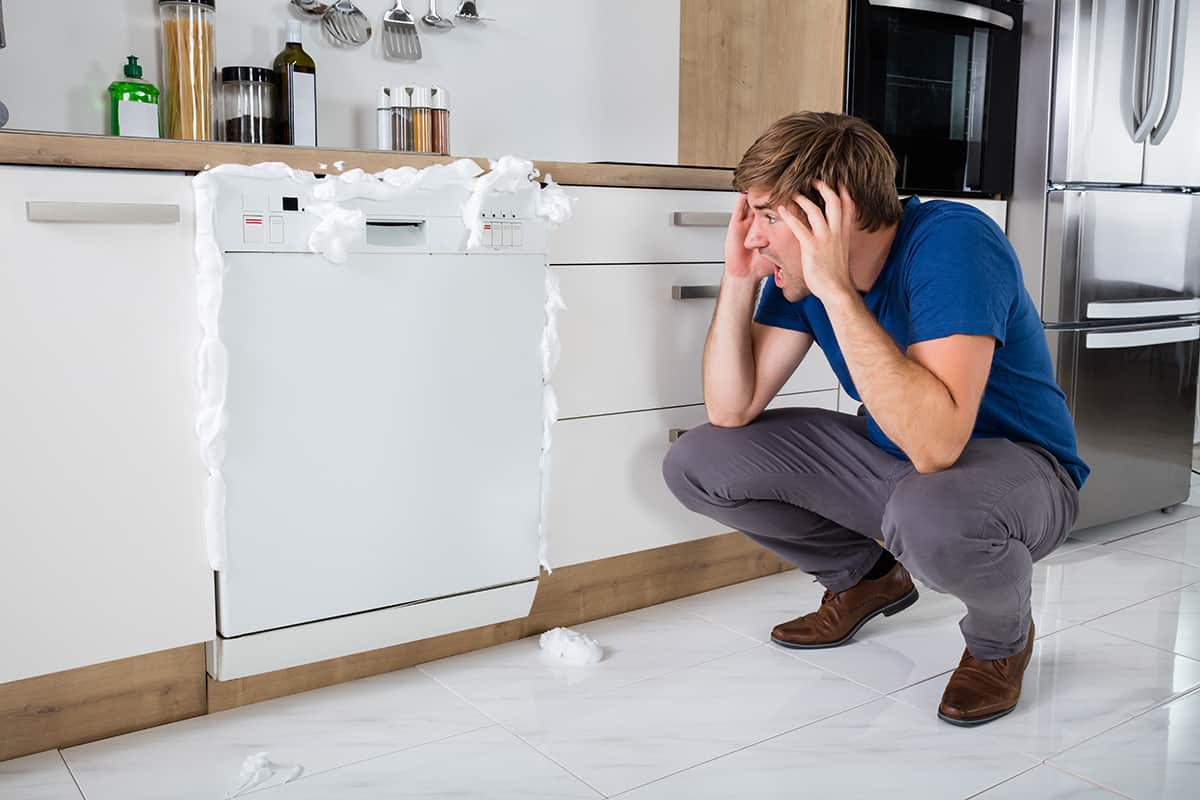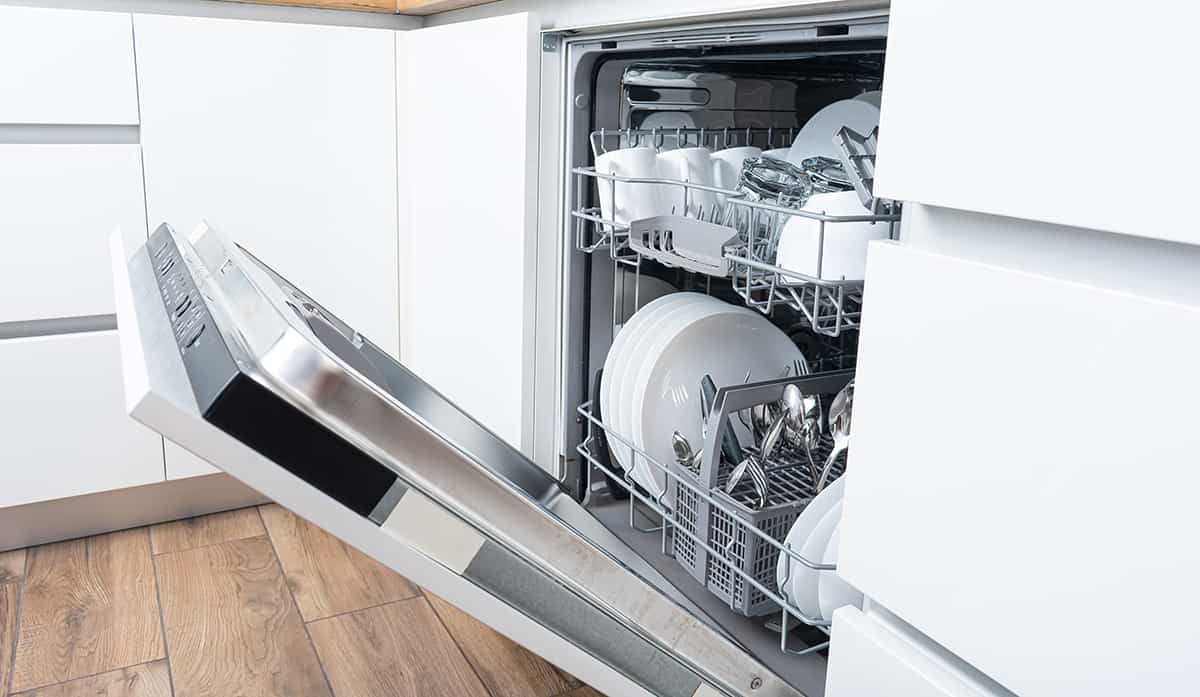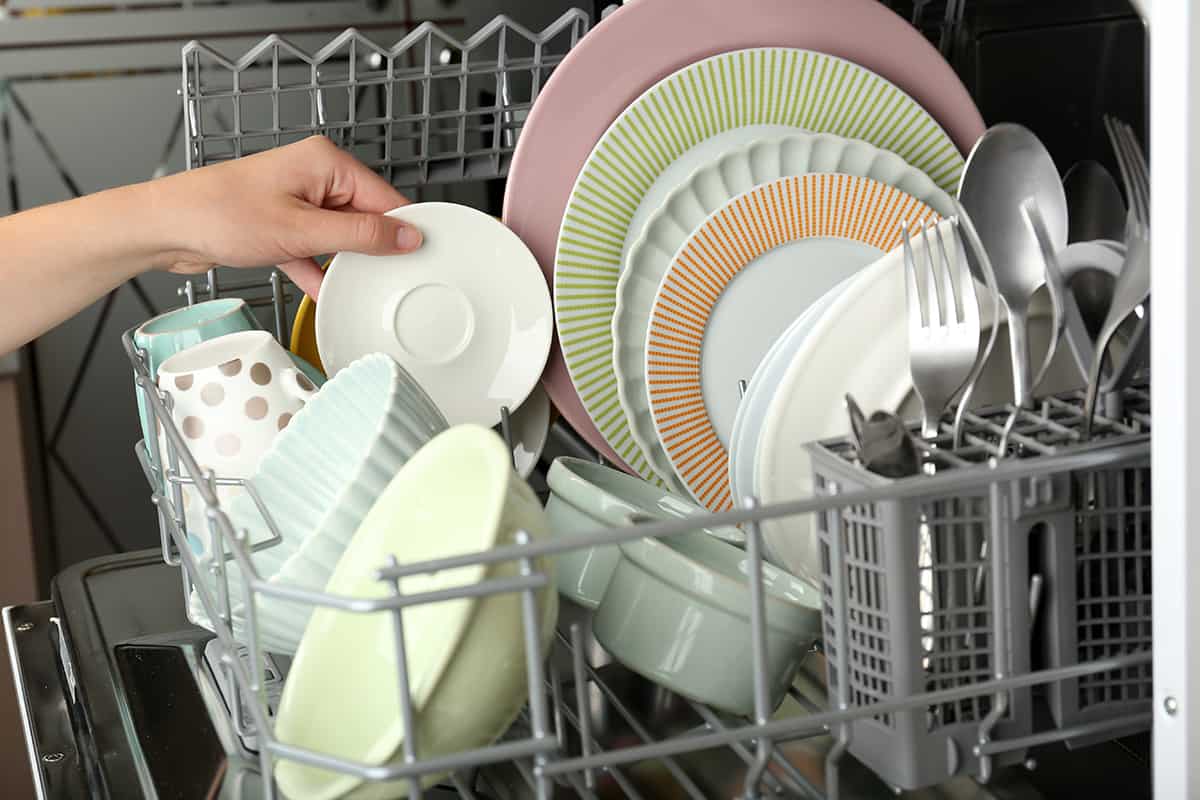As great as dishwashers can be, they’re not invincible. There are certain things you can do that might not just affect its overall performance but also cause it to break down. One thing many people don’t pay enough attention to is how much they load into the dishwasher.
It’s possible to overload a dishwasher. Overloading a dishwasher makes it difficult to wash and rinse your dishes, prompting you to run an additional cycle and accelerating the appliance’s wear and tear.
There are long-term effects that overloading can do on your dishwasher. In this guide, I’ll explain what overloading a dishwasher is and how to properly load a dishwasher. I’ll also cover other common dishwasher mistakes you may have inadvertently made and how to avoid doing them in the future.
Can You Overload a Dishwasher?
It’s entirely possible to overload a dishwasher. What many people do is overcrowd the dishwasher with far too many dishes and cookware, which doesn’t just increase the risk of breaking the racks but also prevents the dishwasher was cleaning the dishes thoroughly.
The best thing you can do is to use the racks and their individual compartments as guides to determine how much you can put inside the dishwasher per cycle. Other than that, consult the included paperwork to see how many place settings the dishwasher can handle at any given time.
Signs of an Overloaded Dishwasher
Here are the common telltale signs that you should look for to figure out whether or not your dishwasher is overloaded.
Unclean dishes

The spraying arms are supposed to distribute the water all over the interior of the dishwasher. Their primary job is to rinse soap and debris off the surface of your dishes, giving them a squeaky-clean feeling by the time the dishwasher’s timer hits zero.
However, overloading a dishwasher will prevent the spraying arms from distributing the water evenly. When this happens, some of your dishes might still feel greasy to the touch, while other dishes remain covered in soap. When this happens, you might have to run one or two additional rinse cycles to get rid of every last bit of debris.
Clogged filters
An indirect effect of overcrowding a dishwasher is clogged filters. The more dishes you place inside the dishwasher, the more debris it has to remove, and the higher the risk the debris will accumulate inside the fine-mesh filter cup.
A clogged filter can result in standing water at the bottom of the tub, thereby increasing the risk that bacteria and other contaminants find refuge in the tiny nooks and crannies in the tub. You will have to clean the dishwasher filter by hand before running another cycle.
Leaks

While uncommon, it’s possible that your dishwasher could spring a leak due to overcrowding its dishracks. This is especially true when you fill the dishwasher with large items, such as pots and pans, in the wrong orientation to “save space.”
Leaks could come in the form of water pouring off your dishware and cookware the moment you open the door or standing water at the bottom of the tub will find tiny cracks to escape through the door’s seals.
Clanging noises
While dishwashers are designed to be quiet during operations, they don’t take into account the clinging and clanging noises caused by the dishes. For the most part, you can avoid excessive clanging sounds by arranging your dishes in an appropriate manner.
When you overfill a dishwasher, your dishes may crash into each other whenever the spray arms release high-pressure jets of water. This increases the risk of your dishware becoming damaged or even broken during the wash cycle.
Constant maintenance issues
On average, you should run five cycles per week. A single cycle includes spraying, washing, rinsing, and drying. Overworking your dishwasher is a real risk, especially if you use the machine to wash every dish you have in your home. It’s also a real risk when you overload a dishwasher.
The more dishes inside the dishwasher, the less the dishwasher can actually clean, which may prompt you to run an additional cycle. Doing so repeatedly will strain the motor and make it more susceptible to maintenance issues down the line.
How to Load a Dishwasher

The dishwasher’s manual should give you a good idea of how and how not to load your dishwasher. However, I’ll explain a method that will work with most dishwasher models.
1. Loading the Top Rack
Pull the top dishrack out as far as it can go. You’ll notice that it has several dull spikes that point upward. Those spikes allow you to mount cups, glasses, and tiny bowls. Make sure you load one spike with one cup, glass, or bowl. The top rack can also be used to mount dishwasher-safe plastics.
2. Loading the Utensil Basket
Most dishwashers will have a removable utensil basket with a handle. You can move it to any dishrack level you want, though the optimal locations are at the topmost or bottommost racks. When loading spoons and forks, place them, so the handles are pointed down. Knives should have their handles pointed up to prevent injury when unloading the dishwasher.
In addition, you should make sure that you don’t overcrowd the utensil basket. The basket may come with tiny compartments which you can load one spoon, one fork, and one knife into. You might be able to get away with five utensils per compartment, but make sure there’s a bit of wiggle room between them.
3. Loading the Bottom Dishrack
The bottommost dishrack is used for the largest dishware and cookware items you want to clean. Like the top rack, the bottom dishrack comes with individual spikes that prop up your plates. Make sure one spike props up only one dish.
As for the bulkier items, such as cutting boards, load them at the sides of the dishrack. That way, they don’t block the detergent dispenser and spray arms. Any large items, like casserole dishes or pots, should be placed upside-down over multiple spikes. Make sure to leave a distance of one or two spikes between them and the nearest items.
Additional Tips
- Always load from back to front. That way, you’ll have an easier time gauging how much more empty space is inside the dishwasher.
- Place plates, bowls, and pots at an angle. This prevents water from accumulating in the dishes, which can splash all over your floors. This also ensures that any debris in the dishes or cookware falls toward the bottom of the dishwasher’s tub and through the drain.
- Only run the dishwasher when it’s full. That way, you can limit how many dishwashing cycles you run per week and save a bit on energy and water bills.
Other Common Dishwasher Mistakes

Next, I’ll cover an assortment of other common dishwasher mistakes many owners are guilty of making. If you’ve made one or several of the following mistakes, don’t feel too bad—it’s never too late to change your dishwashing habits!
Pre-Rinsing
You might think that pre-rinsing your dishes would cause less strain on your dishwasher, which is technically true. However, the issue is that modern dishwashers have sensors that detect how much debris is on your dishes. You can actually trick your dishwasher into believing that your dishes are cleaner than they actually are by pre-rinsing them to give them a false sense of shininess.
However, if you have an older model—one that is around 10 years old—you’ll still have to pre-rinse your dishes.
Washing Cutlery
Steak knives and knives used for cooking should stay away from dishwashers at all times. While the water and detergent might be delicate on the stainless-steel blades, having other utensils bump into them during the wash and rinse cycles isn’t. Butter knives are completely fine to put in your dishwasher since they’ll already dull.
Washing Non-Dishwasher Safe Items
If an item says it’s not dishwasher safe, it’s not dishwasher safe—period. It’s pretty common that wooden utensils should not be washed in a dishwasher since the extreme temperatures can cause them to crack or, best-case scenario, force moisture into tiny recesses that will harness bacteria growth. Aluminum, copper, and ceramic dishes, while technically dishwasher safe, can become warped due to rapid heating and cooling, as well as become damaged when bumping up against other items.
Using Too Much Detergent
More is certainly not better when it comes to dishwasher detergent. Adding too much detergent can cause an avalanche of suds, which will be too difficult for the spray arms to remove. What you’ll end up with is slightly spotty patches on your dishes that you’ll have to manually rinse off. It’s safer to go with slightly less detergent when refilling per the manual’s instructions.
Not Cleaning the Filter
Failing to regularly clean the filter can lead to an assortment of problems, including leaks and not draining water. It can also become the perfect next for bacteria to grow, leading to foul odors every time you open the dishwasher door. Deep-cleaning a dishwasher is more of a pain than you might think, so you should empty and wash the filter regularly.






